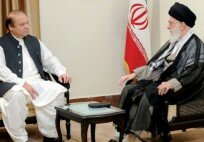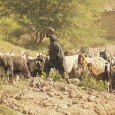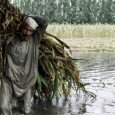By Mina Sohail –
Military presence in Siachen poses vast dangers to the environment
The Siachen Glacier is one of the mainstays of the frosted relations between Pakistan and India. Dubbed as the “world’s highest battlefield,” the dispute has overseen military standoffs, interventions by the international community and has broader implications for the region in terms of its relevance to the pertinent issue of climate change.
Presence of Indian forces on Siachen glacier is a serious environmental threat to Pakistan, according to the Adviser to the Prime Minister on National Security and Foreign Affairs Sartaj Aziz. He said that while Pakistan faced water shortage, Indian troops were damaging the environment of Siachen on a daily basis. Aziz termed the presence of Indian forces on Siachen a big issue and said that wastes disposed off by thousands of Indian soldiers were threatening the existence of the glacier.
For Indian policy makers according to Arshad Abbasi, strategic interests take precedence over environmental concerns: ‘’When I raised this question with retired Indian Army Generals, and policymakers in New Delhi, the answer was simple,” said the water and energy specialist. “Territory is their prime concern but conserving glacial Ice, for the stabilization of climate change in the region, environment, and waters of Indus River is not part of the security doctrine of India.’’
In a paper published by Neal A. Kemkar in the Stanford Law Review, he writes that Pakistan and India have both claimed the entire Siachen area. Neither nation had a military presence in the area until 1984. Since that time, however, Indian and Pakistani armies have been fighting a constant conflict in the glacier. Since the 80s, the Indian army has been in physical possession of most of the heights on the Saltoro Range west of the Siachen Glacier, while the Pakistan army has held posts at lower elevations.
According to Kemkar, in the middle of this conflict lies a delicate ecosystem. There are an estimated 20,000 troops settled on the glacier that require thousands of tons of food and supplies are flown and parachuted there. It is also often described as “the world’s highest garbage dump.”
The heat generated by the heating instruments used by both Pakistani and Indian armies and unceasing use of weapons and vehicles has added considerably to the melting of the glaciers. There have been severe effects on the animal life and the snow leopards are going extinct.
Abbasi laments that Pakistan’s environmental organizations have a long way to go and says in strong terms, ‘’Both Ministry and Climate Change division have nothing substantial to their credit.’’ Abbasi foresees a future marked by challenges and traces a solution to the Siachen crisis in diplomacy.
“The impact of human contact on glaciers is evident from the melting of the Siachen glacier and the grave challenges to our environment,” he calimed. “In the past, we have recommended conserving our glaciers – our priceless natural resource, by converting the area into a Siachen Peace Park. Bringing both nations’ troops down is the first step towards securing our glaciers from environmental degradation.”
Although India and Pakistan have talked about removing troops from the battlefield in the disputed Kashmir region, the military bases remain intact in the freezing Himalayan terrain. Thousands of soldiers from both armies are deployed in a restricted area in and around the glacier. Temperatures go down to -50°C, which compels troops to burn kerosene to keep warm throughout the year and frostbite can occur within seconds. Human waste remains preserved in the snow when it cannot be disposed. World Conservation Union’s, World Commission on Protected Areas estimates that, on the Indian side alone, over 2000 lbs. of human waste are dropped daily into crevasses.
Myra MacDonald, a British journalist and author of ‘Heights and Madness,’ a book on the Siachen war is one of the few Journalists to have been to both the Indian and Pakistani sides of Siachen.
In an email interview she said, “You don’t see clear evidence of environmental damage caused specifically by the troops when you go there. It is a huge battlefield – the vastness of it is staggering when you fly over it by helicopter, as I did on both sides, – and the isolated military posts and gun installations are tiny in a huge sea of snow and ice.”
According to environmentalists, glacial retreat in Himalayas and Karakorum ranges has accelerated in recent years because of human presence there. There is constant movement of men and vehicles. The avalanche in April 2012 that hit a Pakistani military base at the disputed Siachen glacier region that killed 140 soldiers is a recent example of the melting of the glacier and its severe environmental devastation.
However, MacDonald says, an excerpt in her book about Fanny Bullock-Workman, an American woman who visited Siachen in 1911-1912 suggests that there were always terrible avalanches in the region; it hasn’t just happened recently.
“My understanding is that most of the damage to the glaciers in the Himalaya and Karakoram is the result of urban activity much further down,” said MacDonald.
More troops have died there from hostile weather conditions than from military action. MacDonald alluded to the health problems faced by soldiers at such heights. “The human body is not adapted to live in these conditions and the troops suffer from all sorts of ailments from frostbite to High Altitude Pulmonary Oedema to sudden heart attacks in fit young men.”
The entire area needs to be demilitarized rapidly on environmental grounds alone. The Siachen glacier is one of the largest sources of water for Pakistanis. To conserve the glacier is not just essential for Pakistan and India but a global requirement considering the changing climate scenario. Other than the unfortunate loss of lives, there is significant ecological degradation and the accompanying loss of material and other resources. There are visible environmental impacts caused by militarization of the glaciers and the ensuing war. Experts say, in another 25 years, the Siachen glacier as we know it today may cease to exist.
The writer is a journalist based in Lahore. She tweets @MinaSohail































































































